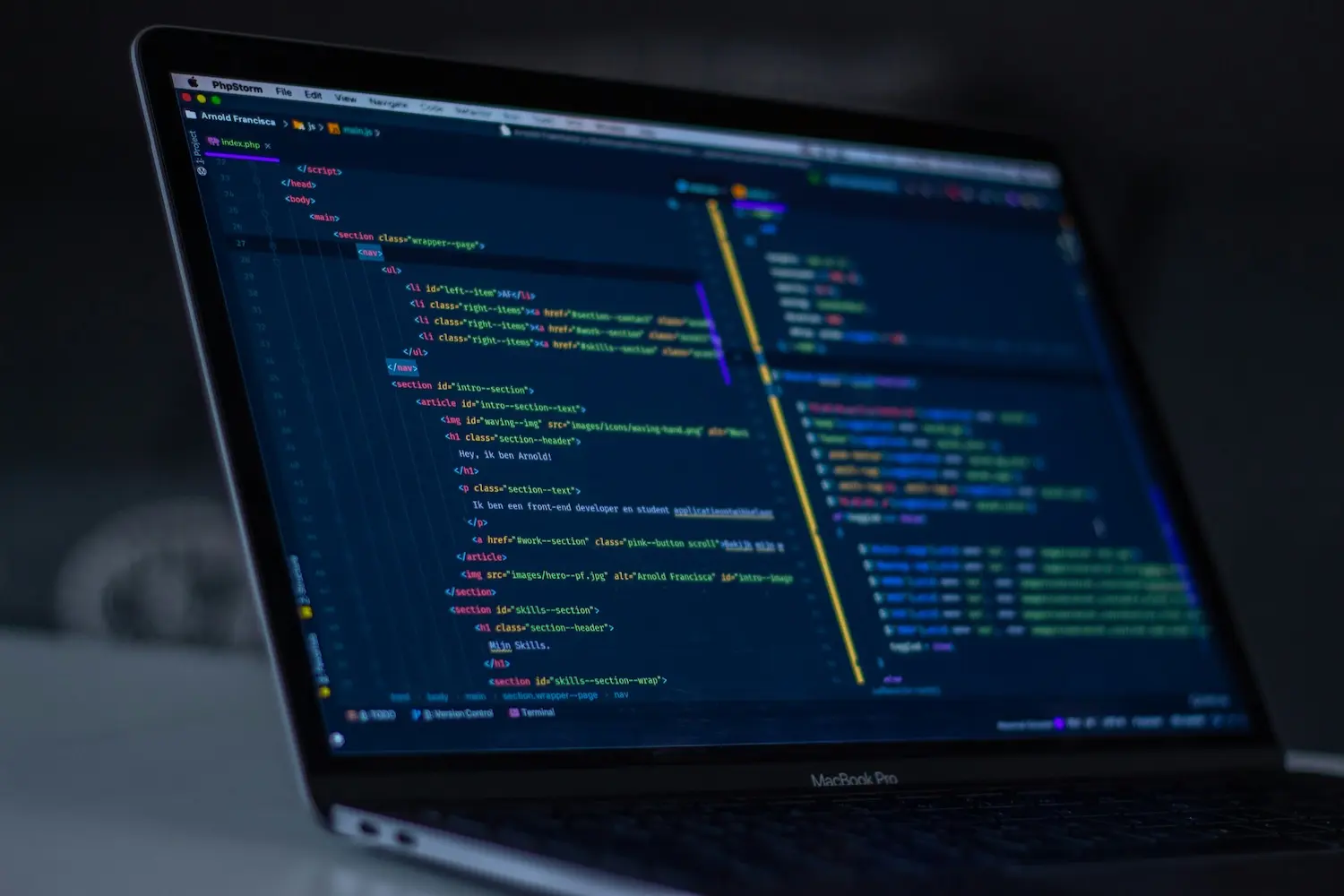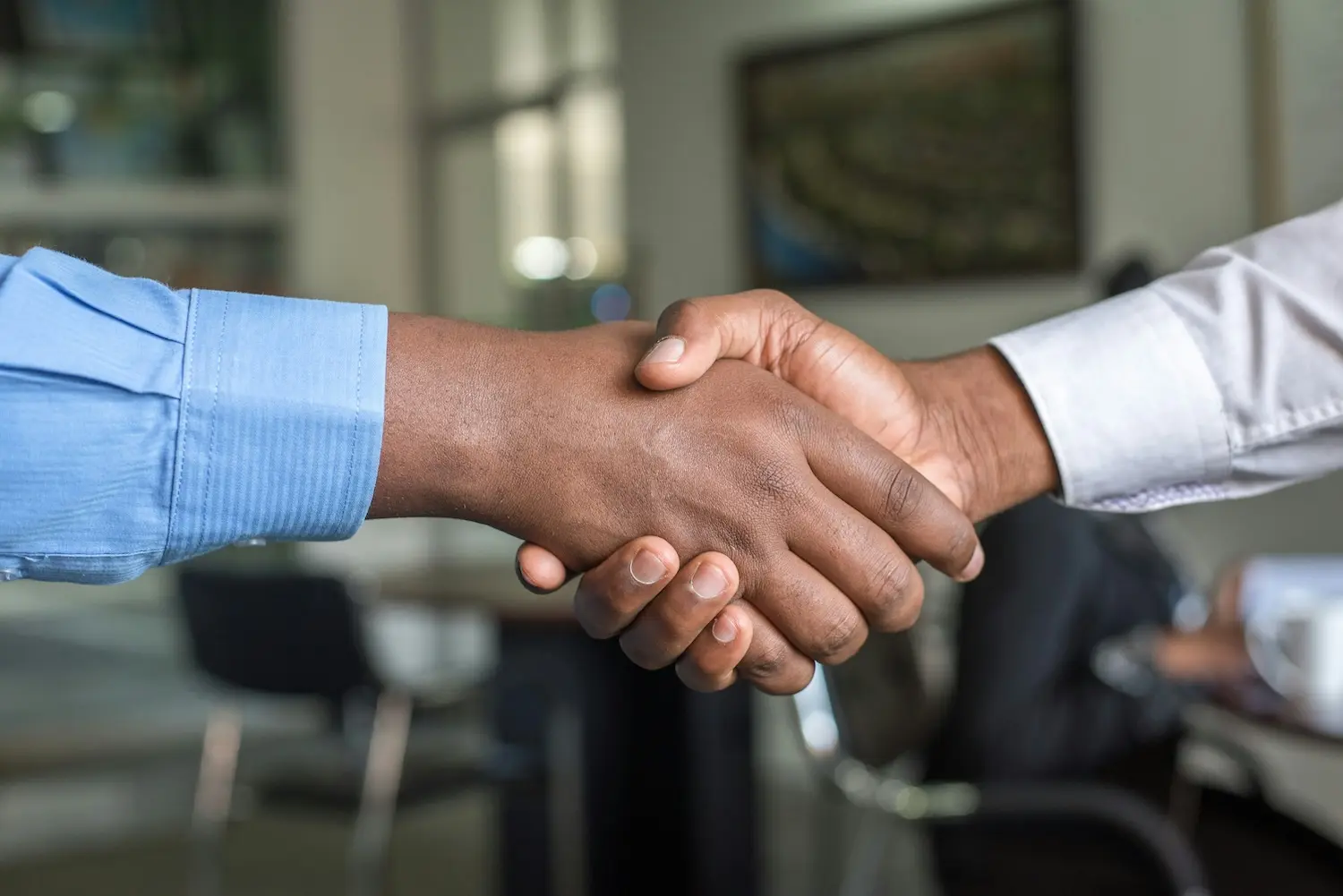Navigating Legacy System Modernization: A Step-by-Step Guide
by Sean, CEO at Aclarify
Introduction

In the ever-evolving digital arena, the ability to adapt and innovate is not just an advantage—it's a necessity. However, many organizations are tethered to the past by legacy systems, outdated technologies that were once cornerstones of their operations. These systems now hinder growth and agility, transforming potential into limitation. The path to modernization, while challenging, is laden with opportunities for transformative growth and efficiency. Aclarify emerges as a guiding light in this journey, poised to illuminate the path forward for businesses eager to embrace the future.
The Legacy Dilemma: Understanding Its Impact

Envision navigating today's roads with a map from two decades ago. This analogy mirrors the struggle of businesses constrained by legacy systems. These technologies, ranging from aging commercial platforms to custom-built applications on obsolete frameworks, aren't just outdated—they're anchors to a bygone operational paradigm, mismatched with the agility required in the current market.
Operational Inefficiencies
Legacy systems often force businesses into cumbersome processes and makeshift solutions, throttling productivity. For instance, a manufacturing firm reliant on a dated ERP system might grapple with inefficiencies that bog down production schedules and inventory management, directly hindering their ability to meet customer demands and maintain operational flow.
Customer Service Limitations
Today's customers, accustomed to the immediacy and convenience forged by digital pioneers, expect nothing less from their service providers. Legacy systems, with their incapacity for real-time updates or integrated customer support, significantly dilute customer trust and satisfaction, a critical misstep in an era driven by customer experience.
Innovation Barriers
The rigidity and incompatibility of legacy systems with modern technologies not only serve as barriers to innovation but also prevent businesses from achieving operational efficiency and exploring new service frontiers. These challenges underscore the urgent need for a strategic approach to modernization—an endeavor that can redefine the trajectory of your business in the digital era.
Setting the Stage for Modernization
In recognizing these challenges, we've curated this guide to serve as a high-level roadmap for businesses contemplating a journey towards digital transformation. Drawing upon our extensive experience in transitioning businesses from legacy infrastructures to advanced, modern solutions, this guide aims to illuminate the path of modernization, from initial audit to continuous improvement.
Step 1: Embracing the Audit

The first step in this transformative journey is a comprehensive audit—a critical examination of your current technological landscape. This process lays the foundation for a successful modernization initiative, enabling us to identify key areas for improvement, assess the readiness for digital transformation, and prioritize actions that align with your business's strategic goals. By sharing this guide, our aim is to equip other businesses with the insights and strategies needed to navigate their modernization endeavors effectively, ensuring they too can harness the benefits of digital transformation to drive growth, efficiency, and innovation.
Embarking on this journey to modernization is not merely about upgrading technology; it's about adopting a strategic mindset towards continuous improvement and competitive differentiation in today's fast-paced digital world. Let's dive into how a comprehensive audit marks the beginning of this critical path to transformation.
Delving Deeper: A Closer Look at Your Systems
As we peel back the layers of your technology stack, we uncover insights that could pivot your path to modernization. For instance, a custom manufacturing company might find that its production scheduling system, anchored to outdated software, hampers its ability to respond to market demands swiftly. The audit could reveal the necessity for a modern, agile solution that integrates seamlessly with supply chain management for real-time adaptability and efficiency.
Charting the Course
Moving from insight to action, the next step is to chart a detailed course forward. This involves developing a strategic roadmap informed by the audit's findings, where the prioritization of system upgrades is key. Consider a facility management service bogged down by manual, paper-based processes; transitioning to a digital workflow management system could be marked as a high priority on this roadmap, promising significant strides in operational efficiency and customer engagement. This roadmap is your navigational chart, marking critical milestones and timelines to guide your modernization voyage.
Step 2: Setting the Sails – Defining Modernization Objectives

Building on the foundation laid by the comprehensive audit, we now pivot to the crucial phase of defining your modernization objectives. This stage is where clarity on your current technological and operational landscape transforms into a strategic vision for the future. It's about setting the sails for your journey, charting a course that not only addresses the inefficiencies and opportunities identified but also aligns seamlessly with your overarching business goals.
Envisioning the Future
As we set our sights on the horizon, our objectives crystallize into a vision of operational excellence, customer satisfaction, and innovation-driven growth.
Operational Excellence: Imagine streamlining the complex logistics of a wholesale distributor, where automating order processing and inventory management systems can drastically cut down on delays and errors, elevating efficiency to new heights.
Enhanced Customer Experience: Envision a retail landscape revolutionized by technology, where modern e-commerce platforms enable personalized shopping experiences, transforming how customers interact with your brand across multiple channels.
Innovation at the Forefront: Reflect on the potential for modernization to catalyze new opportunities, such as leveraging blockchain for secure, transparent transactions in the financial services sector, setting your business apart as a leader in innovation.
This pivotal step does more than just outline the targets for your modernization efforts; it rallies your entire organization around a unified vision for a future marked by growth, efficiency, and competitive advantage. Transitioning smoothly from the insights gained during the audit, we now move forward with purpose, ready to embrace the changes that lie ahead.
Step 3: Navigating Financial Waters

With our sails set towards achieving our modernization objectives, it's critical to steer into the financial waters that underpin the journey. This phase is not merely about earmarking funds for new technology or hardware; it's a comprehensive evaluation of the investment required to bring our vision to fruition. This includes everything from acquiring the latest technology to investing in training for our team, ensuring that our modernization initiative is grounded in financial viability.
Cost-Benefit Analysis: Embark on an in-depth analysis to weigh the long-term benefits against the upfront costs. This meticulous evaluation will illuminate the potential savings derived from increased operational efficiency and the intrinsic value of acquiring advanced capabilities. Understanding this balance is pivotal, enabling us to make informed decisions that align with our strategic objectives and financial health.
Funding Strategies: Dive into exploring a spectrum of funding options to mitigate the financial impact of our modernization efforts. Whether it's capital expenditure (CapEx) for substantial, one-off investments or operating expenditure (OpEx) for recurring expenses such as cloud services, identifying the right funding strategy is crucial. This step ensures that our modernization journey is not only strategically and technologically sound but also financially sustainable.
Navigating the financial aspects of modernization is a cornerstone of our journey, ensuring that our ambitions are matched by a solid economic foundation. It's here that we fortify our commitment to transformation, securing the resources necessary to turn our modernization vision into reality.
Step 4: Charting the Tech Terrain for Modernization

Having navigated the financial waters, our next step is to explore the technological landscape that will support our modernization voyage. This phase is about tailoring a suite of initiatives and strategies to your unique business needs, a crucial step for transforming operations, systems, and customer experiences effectively.
Modernization Initiatives: Choosing Your Path
Our journey offers several pathways, each with distinct advantages tailored to meet your modernization goals. The choice of path hinges on your existing technology ecosystem, business objectives, and the outcomes you envision.
- System Upgrade: Refreshing your software to current versions unlocks new functionalities and support extensions.
- Platform Migration: Moving to more scalable and efficient environments, like cloud platforms, enhances performance.
- Application Re-architecting: Redesigning for modularity and scalability improves agility and innovation in offerings.
- Process Automation: Digital tools streamline manual tasks, boosting efficiency and precision.
- Data Modernization: Upgraded data management and analytics drive informed decisions and insights.
Implementation Strategies: Realizing Your Vision
Choosing the right strategy to deploy these initiatives is pivotal, affecting the overall success of your modernization efforts.
- Incremental Modernization: This cautious approach allows for gradual change, minimizing risk and facilitating continuous refinement.
- Parallel Run: Testing new systems alongside the old ensures the transition meets operational needs without disrupting business continuity.
- Direct Cutover: A swift switch to new systems, suitable for straightforward updates where downtime is limited.
Sample Technology Options for Modernization
A myriad of technologies awaits, each poised to enrich your modernization project:
- Custom Integration Solutions: Ensure seamless system communication with tailored APIs, maintaining operational flow.
- CRM Systems: Advanced platforms offer deep insights into customer interactions, enabling personalized engagement.
- Cloud Computing: This scalable solution supports various needs, from hosting to analytics.
- Mobile Solutions: Improve workforce accessibility and customer engagement with mobile technologies.
- IoT Implementations: Transform operations with smart devices that optimize maintenance and service delivery.
Aligning Technology with Modernization Ambitions
Selecting the right technological mix is a strategic endeavor that should be guided by:
- Strategic Fit: Ensure technologies align with your modernization goals and business strategy.
- Integration and Interoperability: Seamless integration with existing systems is key for a smooth transition.
- Scalability for Future Growth: Choose solutions that can grow and adapt with your business.
As we weave these elements together, we form a comprehensive strategy that not only addresses your immediate modernization needs but also positions your business for enduring success. This integrative approach ensures that each technological decision propels you closer to realizing your vision for a modern, efficient, and innovative operation.
Step 5: Managing Change and Risk

As we delve deeper into our modernization journey, charting the technological course and aligning it with our strategic ambitions, we reach a critical juncture: managing the human and procedural aspects of change alongside the technological updates. This transition is pivotal, requiring a well-orchestrated approach to change management and risk mitigation to ensure the initiative's success.
Championing Change Across Your Organization
The essence of modernization extends beyond technology; it's about fostering an organizational culture ready to embrace new ways of working. Effective change management is key:
- Crafting a Compelling Vision: Start by articulating a clear and inspiring vision for what modernization means for your organization. This vision should illuminate the path ahead, showcasing the benefits and growth opportunities that come with embracing new technologies.
- Building Engagement and Support: Modernization is a collective journey. Engage with your team early, inviting input and addressing concerns, thus building a foundation of support that spans the entire organization.
- Empowering with Knowledge and Resources: Equip your team with the necessary tools and knowledge. Tailored training sessions and resources will instill confidence in your workforce, enabling them to navigate the new landscape effectively.
Proactively Addressing Risks
Recognizing and managing potential risks early is crucial to maintaining momentum and achieving the desired outcomes:
- Comprehensive Risk Assessment: Conduct an in-depth analysis to identify possible technical, operational, and financial risks. This foresight allows for the crafting of mitigation strategies that address challenges before they can derail the project.
- Strategic Mitigation Planning: With each identified risk, develop a detailed plan that specifies mitigation actions, assigns responsibility, and sets clear timelines. This proactive stance ensures that your modernization journey is not only visionary but also grounded in practical risk management.
Understanding the importance of managing change and risk underscores the holistic nature of modernization. It’s not solely about upgrading technology but about transforming your organization in a way that is sustainable, resilient, and forward-looking. This comprehensive approach ensures that your modernization efforts lead to enduring success, with your team fully aligned and ready to tackle the challenges and opportunities that lie ahead.
Step 6: Cultivating Strategic Partnerships

As we navigate through the complexities of change management and risk mitigation, we arrive at a decisive phase in our modernization journey: selecting a strategic technology partner. This choice is more than a matter of technical competence; it is about finding a partner whose vision and values resonate with your own, ensuring a synergy that will propel your business into the future.
The Essence of Strategic Partner Selection
Identifying the right partner is crucial for navigating the intricacies of modernization. This partner needs to offer more than just technological expertise; they must understand your business's unique challenges and objectives, providing solutions that are both effective and customized to your specific needs.
- Complementary Expertise: A true partner brings a depth of knowledge that complements your own, offering insights and solutions tailored to your industry's challenges.
- Alignment of Vision and Values: The most fruitful partnerships are built on shared goals and mutual trust, ensuring that your journey toward modernization is a collaborative effort.
- Track Record of Success: Demonstrated experience in achieving successful outcomes for similar modernization initiatives provides confidence in your partner's ability to deliver.
- Commitment to Innovation: A partner focused on innovation ensures that your business stays ahead, leveraging the latest technologies and strategies for competitive advantage.
In the search for a partner that embodies these qualities, one finds that certain organizations naturally rise to the top, exemplified by their commitment to collaboration, innovation, and tailored strategies for success. While many options exist, we are proud to highlight that Aclarify is uniquely equipped with deep industry knowledge and a successful history of steering companies through their digital evolution. We cultivate partnership models that foster mutual growth, underpinned by a shared ambition to harness technology for sustainable business success.
Choosing the right technology partner is a critical step in your modernization journey, one that reaffirms your commitment to not just adapt but to thrive in an ever-evolving digital landscape. It's about selecting a collaborator who is as dedicated to your success as you are, setting the stage for a future characterized by growth, efficiency, and innovation.
Step 7: Implementing the Modernization Plan

As we move from strategic partnerships to the actual execution phase, our focus shifts to implementing the modernization plan. This stage is where vision starts to become reality, necessitating a plan that is both meticulously designed and inherently flexible, capable of adapting to both anticipated and unforeseen challenges.
Key Components of Effective Implementation
The execution of a modernization plan hinges on several critical components:
- Frequent Communication: Ensure all stakeholders are kept in the loop with regular updates, fostering a transparent environment that encourages feedback and collaboration.
- Visibility Across Phases: Maintain clear visibility into each phase of the modernization process, allowing for real-time tracking and adjustments as needed.
- Integrating Quality Assurance: Embed quality assurance processes throughout each iteration, not just at the end, to identify and address issues early, ensuring a smoother transition and higher quality outcomes.
- Iterative Approach with Continuous Evaluation: Break the initiative into smaller, manageable segments, allowing for ongoing assessment and refinement. This iterative approach ensures that the project remains aligned with strategic objectives and can adapt to new information or changes in the business environment.
Monitoring Progress and Adapting Strategies
Effective monitoring and the ability to adapt strategies are crucial:
- Utilize Project Management Tools: Leverage project management software to track progress against milestones and KPIs, providing a clear overview of where the initiative stands in real-time.
- Feedback Loops for Realignment: Establish feedback mechanisms that allow for the gathering of insights from all levels of the organization, ensuring that the modernization effort remains relevant and aligned with business needs.
- Agility in Execution: Be prepared to pivot strategies in response to feedback, technological advancements, or market changes. This agility ensures that the modernization effort can respond dynamically to challenges and opportunities alike.
Implementing the modernization plan with these principles in mind not only ensures that the process is managed efficiently but also that the outcomes closely align with the organization’s strategic vision and operational goals.
Step 8: Post-Modernization - Fostering Continuous Improvement

Following the successful implementation of our modernization plan, we transition into a phase of perpetual growth and enhancement. This next chapter is not the conclusion but rather the commencement of an enduring process of evolution and refinement, with the modernization project laying the groundwork for a future of continuous improvement.
Leveraging New Capabilities for Ongoing Optimization
With modernized systems in place, the focus shifts to maximizing these new capabilities:
- Continuous Monitoring and Optimization: Establish a routine of systematic reviews to assess system performance. This continuous monitoring enables the identification of opportunities for further enhancements, ensuring that the infrastructure not only meets but surpasses business requirements.
- Data-Driven Insights for Strategic Decision Making: Harness the power of data from modernized systems to fuel strategic decision-making. This wealth of information opens doors to uncovering new growth avenues and areas for innovation, ensuring that decisions are informed and impactful.
Building a Culture of Continuous Innovation
The true potential of modernization is realized in the cultivation of an innovative organizational culture:
- Encourage Exploration and Experimentation: Promote a workplace ethos that values the exploration of new technologies and methodologies. This culture of curiosity propels continuous innovation, keeping the organization at the forefront of its industry.
- Stay Agile and Responsive: Embrace a mindset of flexibility and responsiveness to rapidly changing technologies and market trends. This agility is crucial for maintaining a competitive edge, allowing the organization to adapt swiftly and effectively to new opportunities and challenges.
The completion of the modernization initiative is merely the beginning of an ongoing journey. It positions the company to not just react to changes but to proactively seek out and implement improvements, ensuring sustained success in a dynamic business environment.
Conclusion
As we conclude this comprehensive guide to legacy system modernization, it's clear that this endeavor extends far beyond a mere project. It represents a strategic journey towards redefining your business's future, leveraging change management, strategic partnerships, and cutting-edge technologies to fuel efficiency, customer satisfaction, and innovation. This journey, while complex, is instrumental in positioning your organization for sustained success in an ever-evolving digital landscape.
Aclarify stands ready to be your partner through this transformative process. With our deep expertise, supportive guidance, and strategic insights, we are equipped to help you navigate the intricacies of modernization, ensuring your journey not only achieves but exceeds your goals.
Embark on Your Modernization Voyage with Aclarify
Are you prepared to elevate your business to new heights of efficiency and innovation? Partner with Aclarify for a seamless modernization experience. Reach out to us to learn how we can support your journey towards a competitive and flourishing future.